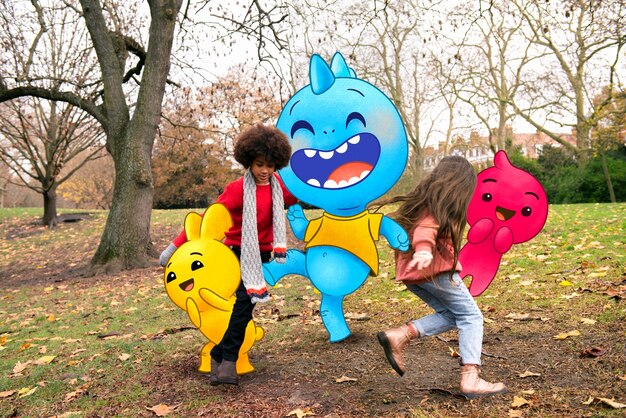Use of public space: a tool for prosocial development
International evidence has shown how the recovery and use of public space by children and young people develops prosocial skills that act as a protective factor against the risks that arise in childhood development.
KIDS UP
1/19/20242 min read


International evidence has shown how the recovery and use of public space by children and young people develops prosocial skills that act as a protective factor against the risks that arise in childhood development
International evidence has shown how the recovery and use of public space by children and young people develops prosocial skills that act as a protective factor against the risks that arise in childhood development.
It is important to encourage children's communal use of public space with appropriate parental supervision and clear standards of behaviour. A city protects itself against crime to the extent that its inhabitants appropriate the space that it seeks to take from them.
Public space is an invaluable resource for the development of children and young people. Allows social interaction, play, exploration and learning. Through these experiences, children acquire social and emotional skills that will be useful throughout their lives. Furthermore, the use of public space encourages inclusion and diversity, by providing a meeting place for people of different ages, cultures and socioeconomic backgrounds.
Interaction with other children and adults in public spaces encourages the development of prosocial skills, such as empathy, cooperation, conflict resolution and respect for others. These skills are essential for establishing healthy relationships and contributing positively to the community. By participating in community activities in public spaces, children learn to work as a team, share and make decisions collaboratively.
Furthermore, the use of public space by children and young people gives them the opportunity to develop physical and cognitive skills. By playing outdoors, running, climbing, jumping and exploring their environment, children strengthen their muscular and skeletal system, improve their motor coordination and stimulate their imagination and creativity. Public space also allows them to experiment and learn about the world around them, discovering new places, objects and phenomena.
It is important to highlight that the use of public space by children must be carried out with the supervision of parents or responsible caregivers. The presence of adults provides security and emotional support to children, while teaching them norms of behavior and respect for others. Parents should set clear boundaries and teach their children to respect the space and rights of other users. In this way, an environment of peaceful coexistence is promoted and conflicts and risk situations are avoided.
To encourage children's community use of public space, local authorities and urban planners need to design and maintain safe and recreational areas. These areas must have appropriate equipment for different ages, such as playgrounds, sports fields and green areas. Furthermore, it is important that universal accessibility be promoted, so that all children, regardless of their abilities, can enjoy public space in an inclusive way.
Likewise, it is essential that awareness and education campaigns be carried out aimed at parents and the community in general, to promote the importance of the use of public space by children. These campaigns should highlight the benefits for children's physical, emotional and social development, as well as the importance of supervision and establishing behavioral standards. It is also necessary to generate spaces for dialogue and citizen participation, where children and young people can express their needs and opinions about the use of public space.
In summary, the use of public space by children and young people is essential for their prosocial development. Through social interaction, play, and exploration, children acquire social and emotional skills that will serve them throughout their lives. Furthermore, the use of public space encourages inclusion and diversity, by providing a meeting place for people of different ages and socioeconomic backgrounds. It is the responsibility of parents, local authorities and the community in general to promote and protect the community use of public space by children, to guarantee their comprehensive devlopment and well-being.
